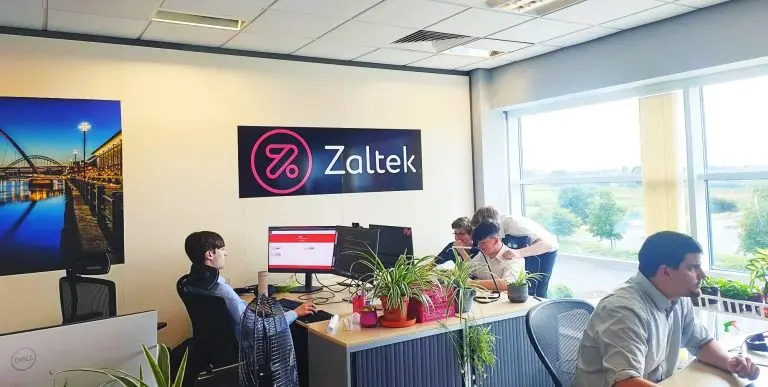Why Continuous Monitoring is a Cybersecurity Must
Cyber Security • August 22, 2024

Picture this: you leave your house for vacation, confident in your locks’ security. But living in a shady neighborhood, wouldn’t you want to check them regularly? A small crack or hidden weakness could be disastrous.
This is the risk you take when neglecting continuous cybersecurity monitoring.
Cyber threats evolve constantly, making traditional security measures insufficient. Continuous monitoring acts as your vigilant digital guard, constantly checking for weaknesses and sounding the alarm before attackers can exploit them.
Why Continuous Monitoring Matters
Continuous monitoring isn’t just a “good to have”—it’s essential for businesses of all sizes. Here’s why:
Breaches Happen Fast
Cyberattacks can occur in seconds, exploiting vulnerabilities before you even know they exist. Continuous monitoring provides real-time insights, allowing you to swiftly identify and respond to threats, minimizing potential damage.
Advanced Threats Need Advanced Defenses
Hackers continually develop sophisticated techniques that can bypass traditional defenses. Continuous monitoring delves deeper, analyzing network traffic, user behavior, and system logs to uncover hidden threats within your network.
Compliance Requirements Often Mandate It
Many industry regulations and data privacy laws require continuous monitoring. Non-compliance can result in hefty fines and reputational damage.
Peace of Mind and Reduced Costs
Continuous monitoring helps prevent costly breaches and downtime, reducing the workload for security teams by automating routine tasks and allowing them to focus on strategic initiatives.
What Does Continuous Monitoring Look Like?
Continuous monitoring isn’t a single tool; it’s a holistic approach that combines various elements, including:
Log Management
Collecting and analyzing security logs from firewalls, devices, and applications to detect suspicious activity.
Security Information and Event Management (SIEM)
SIEM systems gather security data from various sources, providing a centralized view of your security posture and identifying potential threats.
Vulnerability Scanning
Regular scans identify weaknesses in your systems and applications, allowing you to patch them before attackers exploit them.
User Activity Monitoring
Monitoring user behavior can identify suspicious activities, such as unauthorized access attempts or data exfiltration.
Network Traffic Analysis
Monitoring network traffic can reveal risks like malware, suspicious communication patterns, and attempts to breach your defenses.
Benefits Beyond Threat Detection
Continuous monitoring offers advantages beyond identifying threats, including:
Improved Threat Detection Accuracy
By analyzing vast amounts of data, continuous monitoring reduces false positives, enabling your security team to focus on genuine threats.
Faster Incident Response
Real-time alerts enable quicker responses to security incidents, minimizing potential damage.
Enhanced Security Posture
Identifying vulnerabilities helps prioritize patching and remediation efforts, proactively strengthening your security posture.
Compliance Reporting
Continuous monitoring systems can generate reports to help you prove compliance with relevant regulations, saving time and resources during audits.
Getting Started with Continuous Monitoring
Implementing continuous monitoring doesn’t have to be overwhelming.
You can begin with a few common-sense steps.
Assess Your Needs
Identify your organization’s specific security needs and compliance requirements. Have a cybersecurity assessment done. This is the best way to identify vulnerabilities you should address.
Choose the Right Tools
Select monitoring tools that align with your needs and budget. Consider managed security service providers (MSSPs) for a comprehensive solution. We can help you ensure a holistic cybersecurity strategy. Plus, we can tailor solutions for your budget.
Develop a Monitoring Plan
Define what your monitoring plan will look like. This helps ensure that things don’t get missed. Here are some things to include in your plan:
- How you will track data
- How you will handle alerts
- Who handles responding to incidents
Invest in Training
Train your security team on how to use the monitoring tools and effectively respond to security alerts. Include training on reporting from monitoring systems. Ensure your team knows how to understand the insights they offer.
Continuous Monitoring: Your Cybersecurity Lifeline
In today’s threat landscape, continuous monitoring is not a luxury. It’s a security necessity. Proactive monitoring of your systems and data has many benefits. You can identify threats early and respond swiftly, as well as reduce the impact of cyberattacks.
Don’t wait for a security breach to be your wake-up call. Embrace continuous monitoring and take control of your cybersecurity posture. An ounce of prevention is worth a pound of cure, especially in the digital world.
Need Help with Your Cybersecurity Strategy?
Monitoring is one part of a holistic approach to cybersecurity. We’ll be happy to help you protect your business. We can customize a plan that works for your needs and budget.
Contact us today to discuss your needs.





